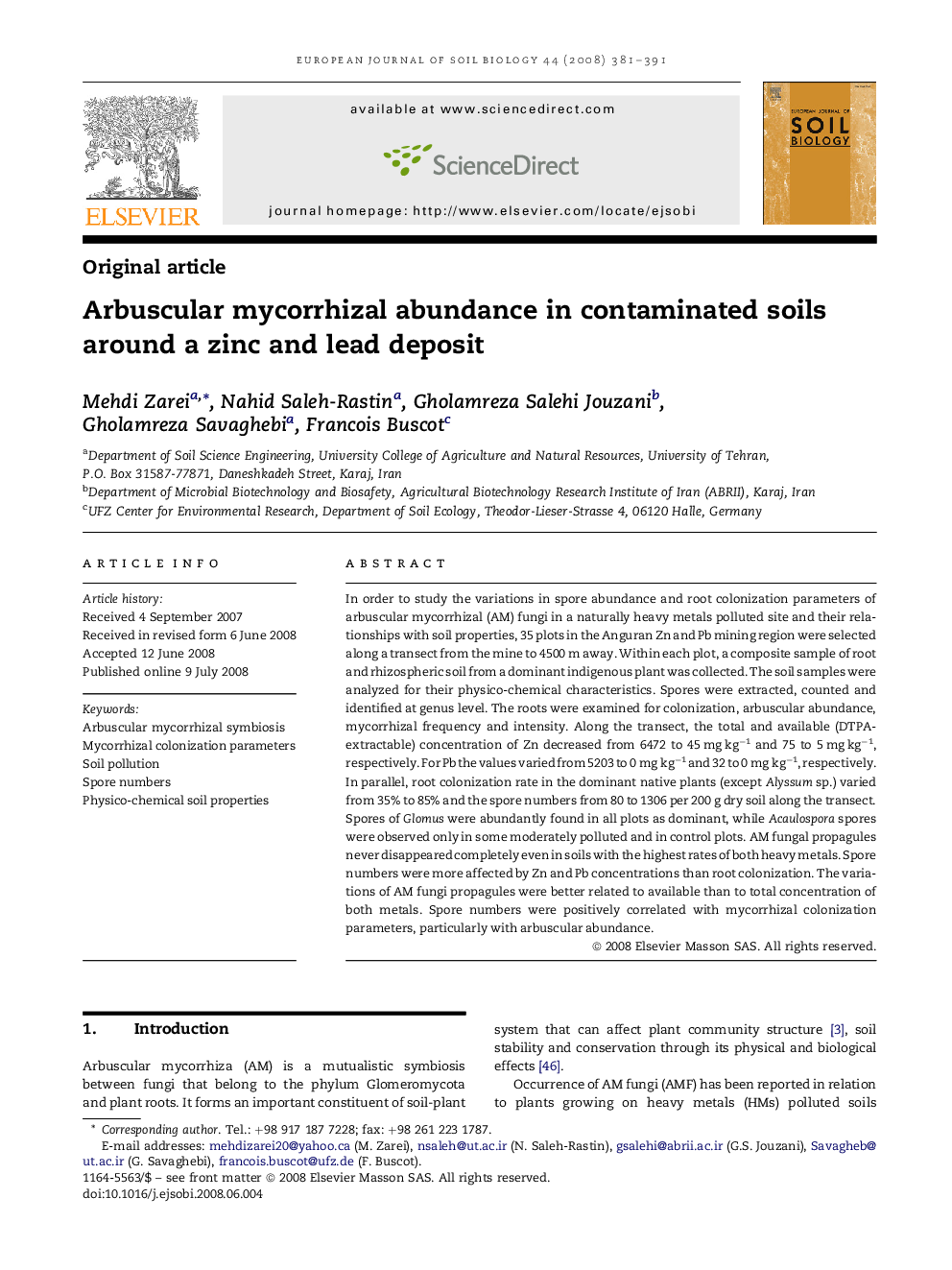| Article ID | Journal | Published Year | Pages | File Type |
|---|---|---|---|---|
| 4392241 | European Journal of Soil Biology | 2008 | 11 Pages |
In order to study the variations in spore abundance and root colonization parameters of arbuscular mycorrhizal (AM) fungi in a naturally heavy metals polluted site and their relationships with soil properties, 35 plots in the Anguran Zn and Pb mining region were selected along a transect from the mine to 4500 m away. Within each plot, a composite sample of root and rhizospheric soil from a dominant indigenous plant was collected. The soil samples were analyzed for their physico-chemical characteristics. Spores were extracted, counted and identified at genus level. The roots were examined for colonization, arbuscular abundance, mycorrhizal frequency and intensity. Along the transect, the total and available (DTPA-extractable) concentration of Zn decreased from 6472 to 45 mg kg−1 and 75 to 5 mg kg−1, respectively. For Pb the values varied from 5203 to 0 mg kg−1 and 32 to 0 mg kg−1, respectively. In parallel, root colonization rate in the dominant native plants (except Alyssum sp.) varied from 35% to 85% and the spore numbers from 80 to 1306 per 200 g dry soil along the transect. Spores of Glomus were abundantly found in all plots as dominant, while Acaulospora spores were observed only in some moderately polluted and in control plots. AM fungal propagules never disappeared completely even in soils with the highest rates of both heavy metals. Spore numbers were more affected by Zn and Pb concentrations than root colonization. The variations of AM fungi propagules were better related to available than to total concentration of both metals. Spore numbers were positively correlated with mycorrhizal colonization parameters, particularly with arbuscular abundance.
